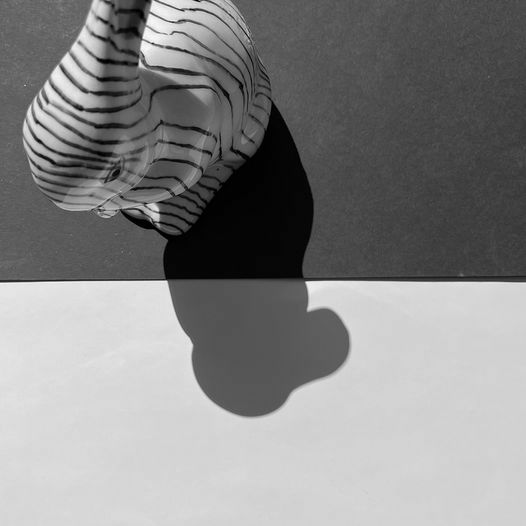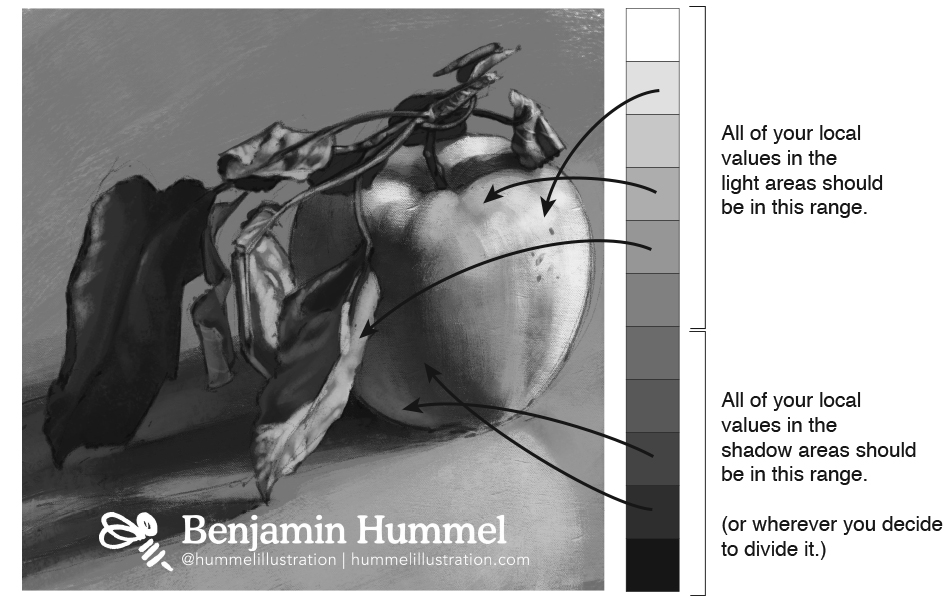When creating a composition, it is important to remember to keep your light areas and your shadow areas as distinct separate areas, especially under a strong light source. The darkest dark in the light area will always be lighter than the lightest light in the shadow area. Don’t believe me? Look at this photo.

What that means is a few things.
First, you can literally draw your entire shadow area as a shape or series of shapes. This includes areas of cast shadow and areas of form shadow.
Then, decide where on your value scale you want your dividing point. Say, it’s right in the middle at five. That means all values in the shadow area should be 5 or darker and all areas in the light should be 5 or lighter. You compress your local values in the shadows to just those 5 values and you compress your local values in your light to just those 5 values.

Finally, you can bounce back in reflective light into the shadow area, especially on more shiny surfaces, but still try and keep those values close to the shadow values. This gives you strong, unified compositions.
